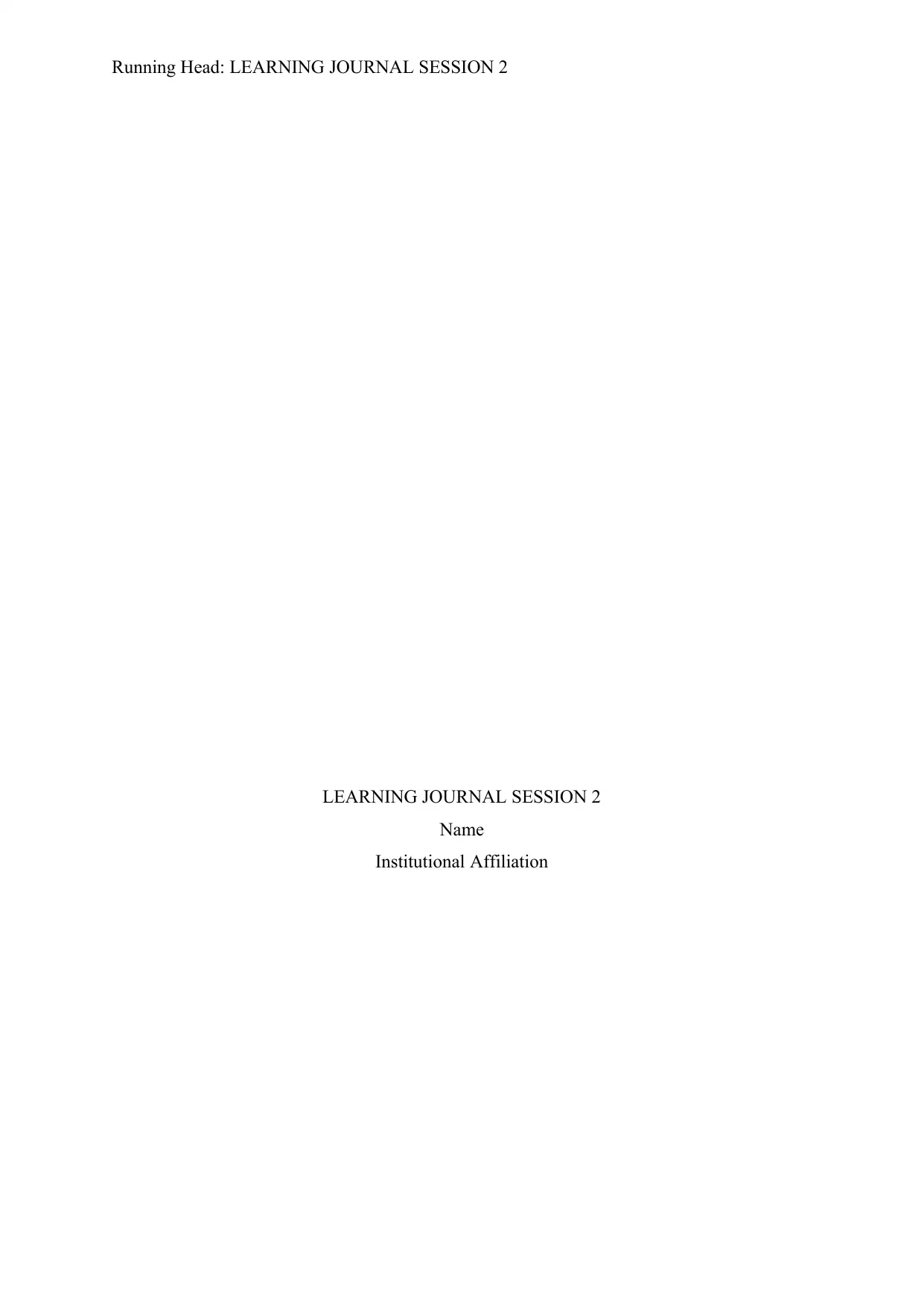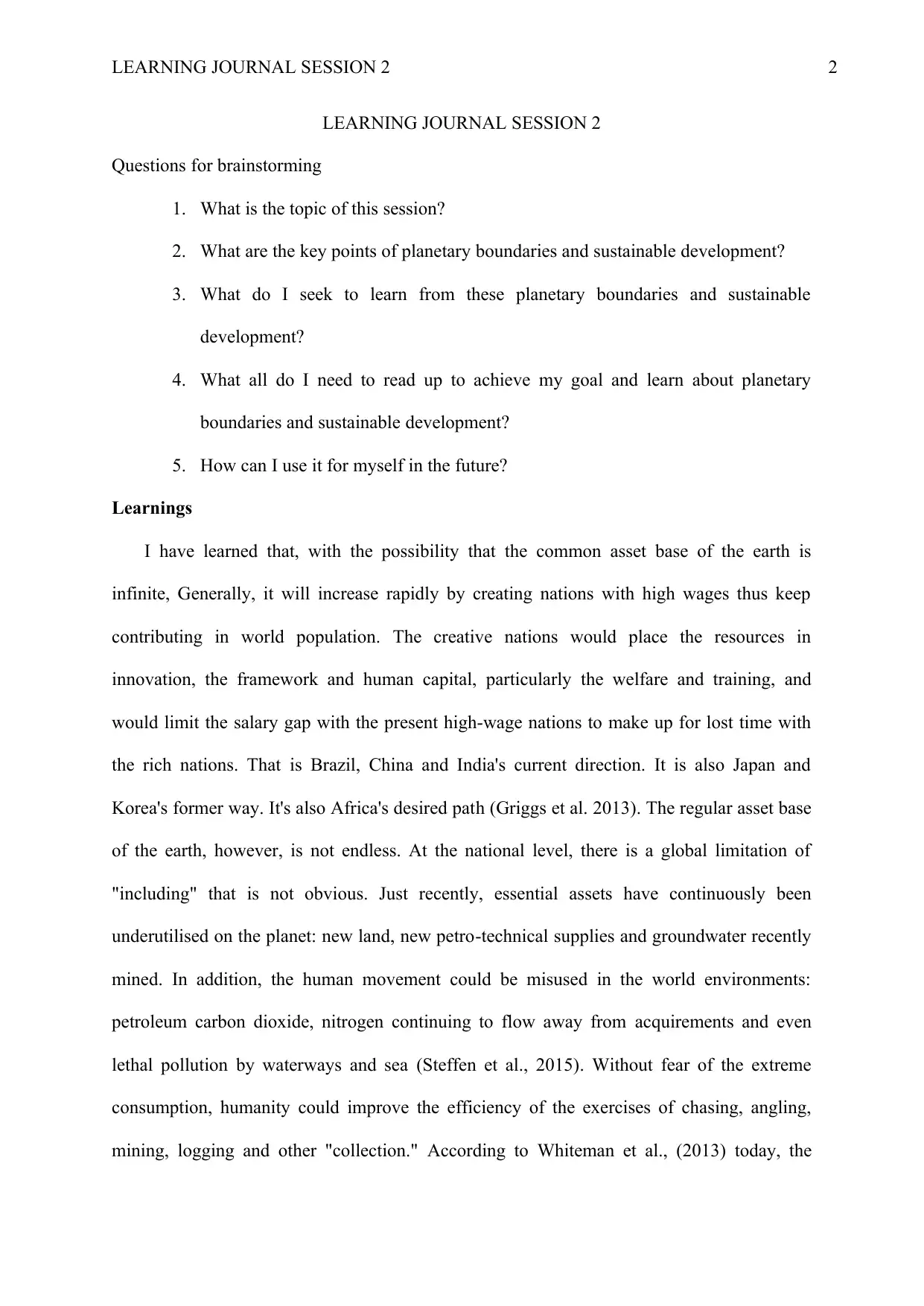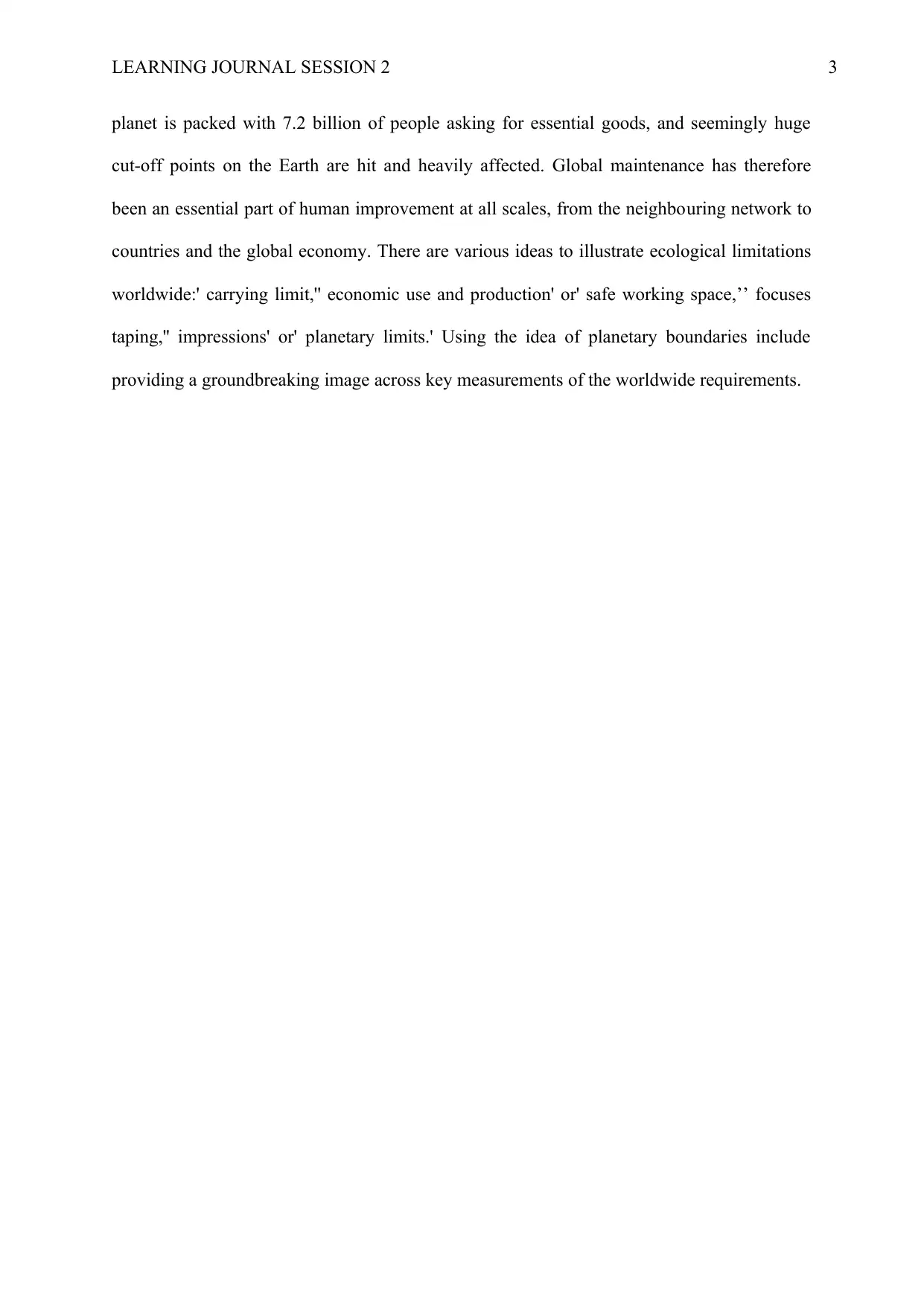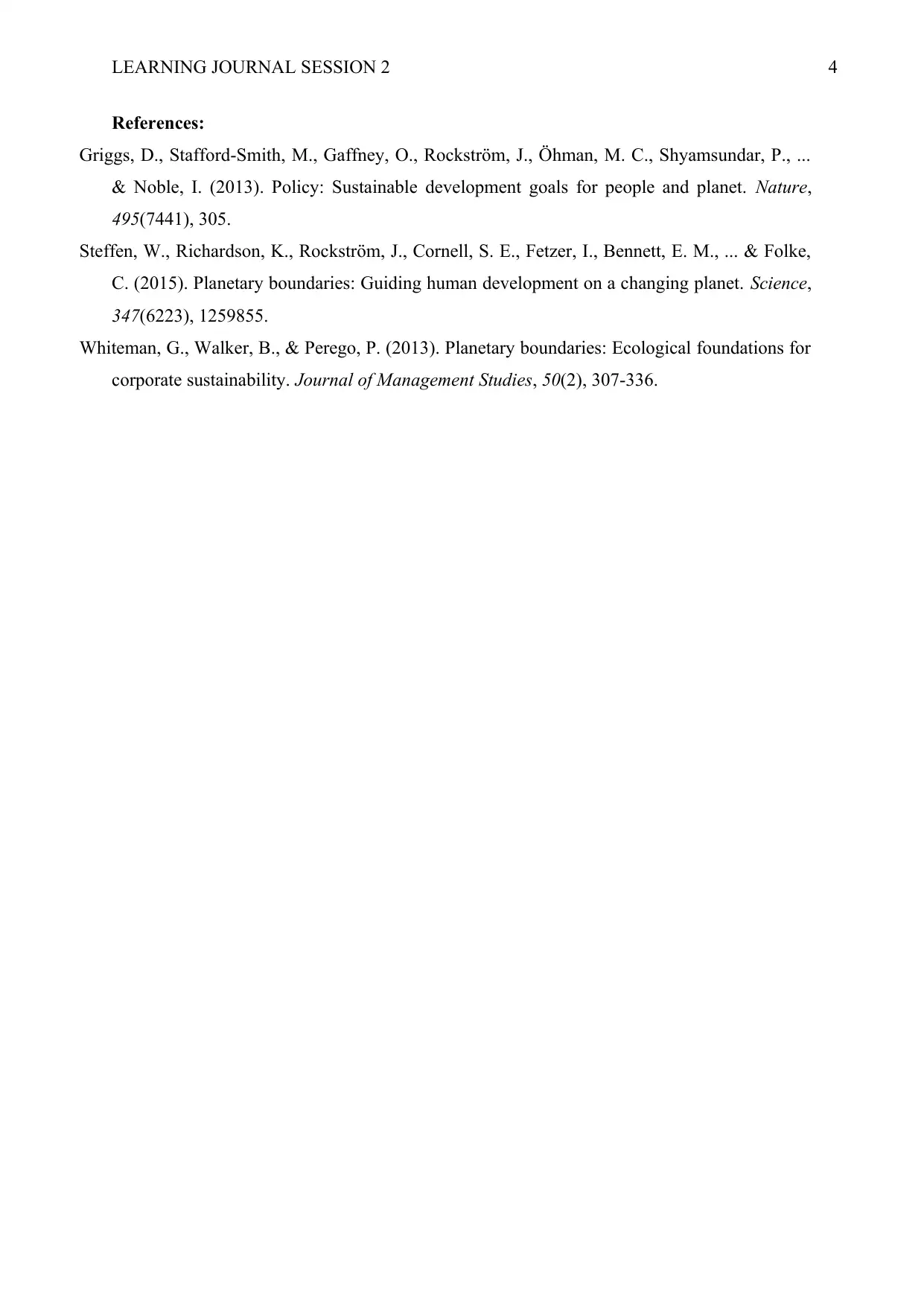Learning Journal: Session 2 on Planetary Boundaries
VerifiedAdded on 2023/03/21
|4
|630
|67
Journal and Reflective Writing
AI Summary
This learning journal, titled "LEARNING JOURNAL SESSION 2," delves into the critical concepts of planetary boundaries and sustainable development. The journal begins by posing key questions to guide the exploration of the topic, including the core aspects of planetary boundaries, sustainable development, and their implications. The author explores the limitations of the Earth's resources, the impacts of human activities, and the importance of global maintenance. The journal references key scholarly works, including Griggs et al. (2013), Steffen et al. (2015), and Whiteman et al. (2013), to support its arguments and provide a comprehensive understanding of the subject matter. The journal emphasizes the need for sustainable practices to ensure the well-being of the planet and its inhabitants. The author highlights the increasing global population and the strain it places on Earth's resources, advocating for the importance of sustainable development and the implementation of planetary boundaries. The journal provides a detailed analysis of these topics, offering valuable insights into the challenges and opportunities associated with balancing human progress and environmental sustainability.
1 out of 4






![[object Object]](/_next/static/media/star-bottom.7253800d.svg)